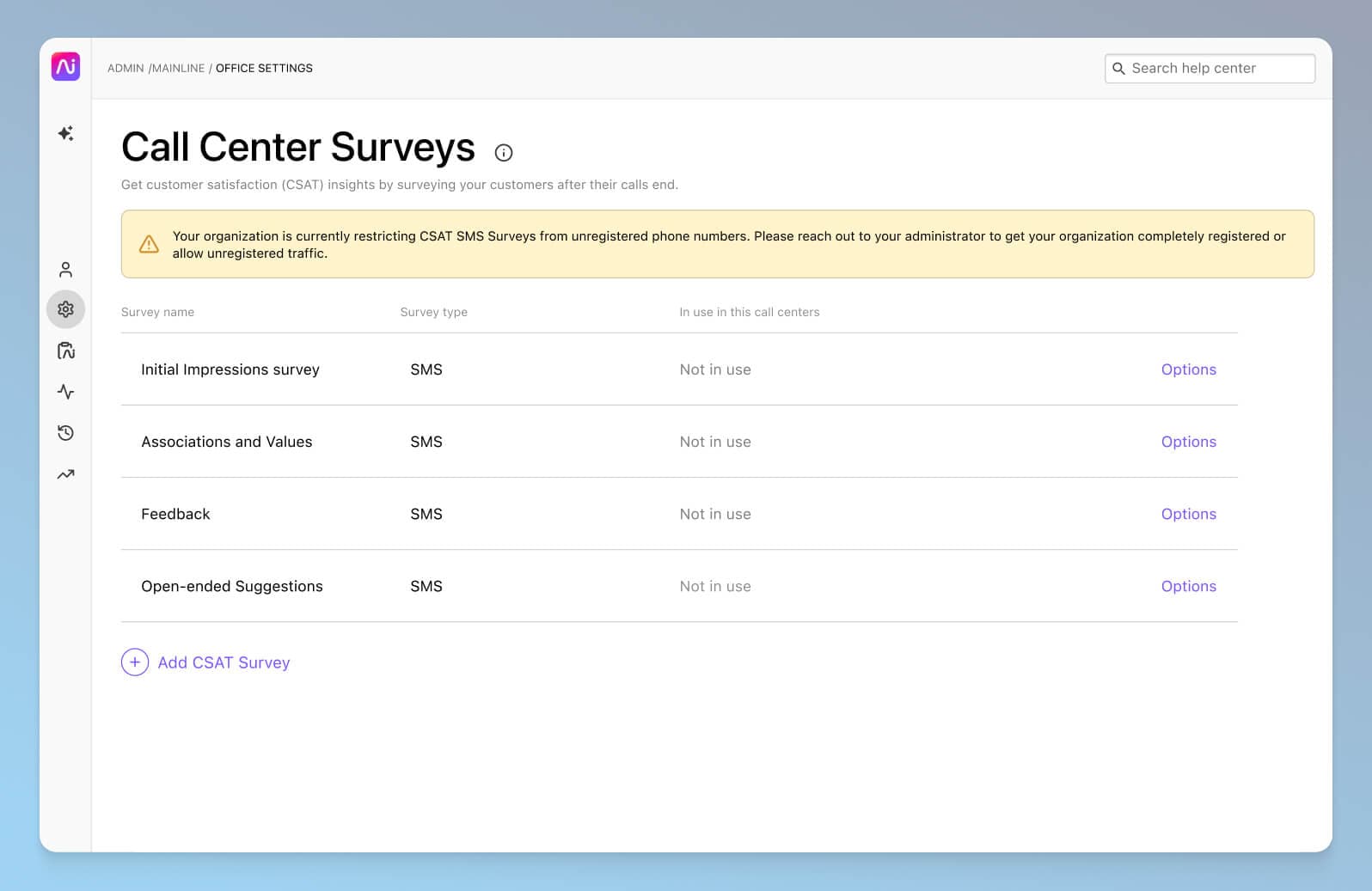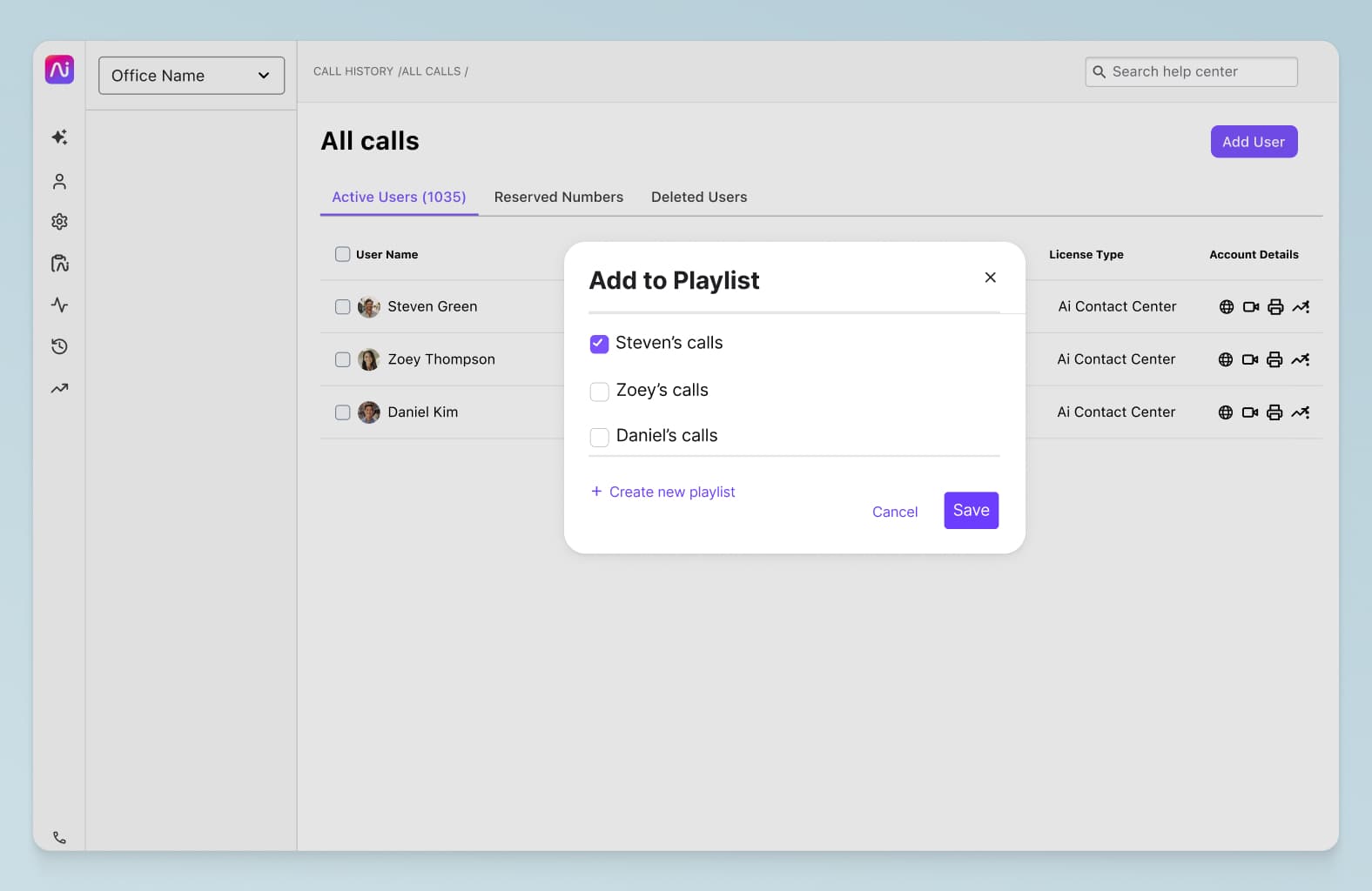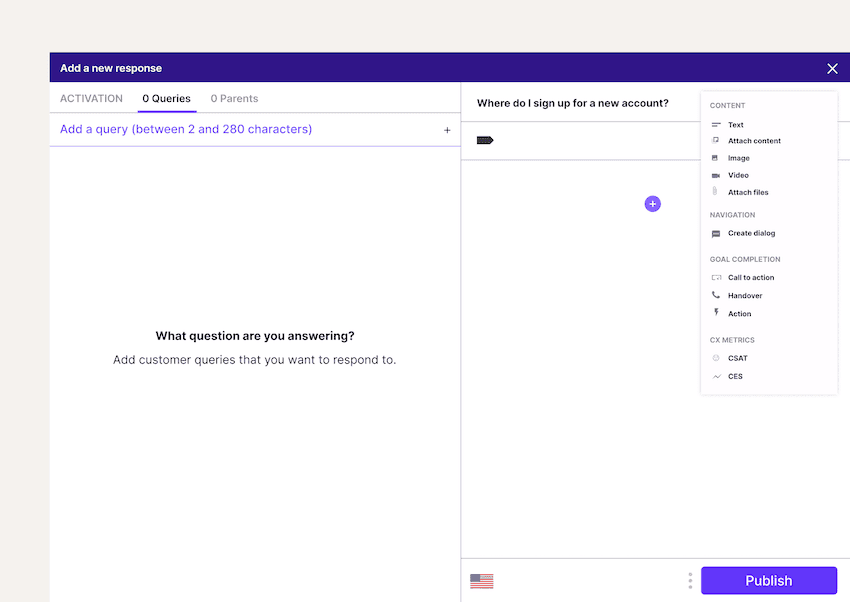Customer intelligence explained: How to gather (and organise) all that data

Senior Product Marketing Manager - Ai Contact Center

Tags
Share
Customer intelligence is one of the most underused—and most powerful—sources of insight you have as a company.
Not only can customer intelligence data help you improve your customer engagement and optimise customer retention, but it’s also surprisingly inexpensive—and easy—to collect. So, why do so many businesses still not have a strategy in place to use or even just collect data?
In this guide, I’ll show you how both large and small businesses, whether they‘re in financial services or retail, can use customer intelligence to win more customers and improve their bottom line.
But first...
What exactly is customer intelligence?
Customer intelligence is essentially any data about your potential, current, and past customers that tells you more about what they want from you as a company. What’s important to keep in mind is that this is an incredibly broad category. Yes, you could do market research surveys and even transaction data to gather customer intelligence about what your customers like or dislike, and what kinds of products or services you should offer... But there’s a lot more you could do.
For example, you could look at behavioural data and your customer interactions to get a better sense of which communication channels or touchpoints they prefer.
And in fact, your customer communications—the conversations you‘re having every day on the phone, through live chat, and so on—are the cheapest sources of customer insights you have. I’ll talk more about this in just a bit.
A few examples of ”customer intelligence” data
I mentioned a few use cases for customer data earlier, but there‘s a wide, wide range of possible types of customer information that you could be collecting:
Recordings or transcripts of your phone calls with customers and prospects (collected with their consent, of course)
Customer behaviour like purchase history (which should be logged in your CRM or customer relationship management platform)
Responses to marketing campaigns (did they click on your email newsletter, and then buy something on your website?)
Demographic information
Social media trends
Customer lifecycle information (are they a new prospect, or are they a repeat customer who loves cross-sell and upsell offers?)
And a lot more...
As you can see, there are many different types of customer intelligence you can collect. But if you can do this well, you‘ll have a goldmine of actionable insights that‘ll help you increase customer loyalty, customer lifetime value, profitability—and many other important metrics.
How to gather customer intelligence: Know where to look
With so many different types of customer intelligence data, where should you start looking? What types of information should you collect? Here are some of the most important ones to consider.
1. Customer satisfaction surveys
Even though CSAT surveys sound pretty great, there’s one big challenge with them: they tend to get low customer engagement. In other words, not a lot of customers actually fill them out.
In fact (depending on the industry and specific business of course), we've found that on average only about 5% of customers actually fill out CSAT surveys. On a related note, usually only the angriest—and happiest—customers actually bother to respond to these surveys, which means your CSAT answers are likely to be very skewed and not representative of how your customers feel overall.
CSAT (customer satisfaction) scores are probably one of the most popular metrics out there, across different industries and company sizes. And for good reason. CSAT surveys are relatively easy to set up and send out, and they tell you directly what your customers are thinking.
If you’ve ever called a company or had a live chat conversation on their website, you’ve probably come across a simple one- or two-question survey asking you to rate your customer satisfaction on a scale from one to five (or from “very sad face” to “very happy face”).
Our own support team, for example, uses Dialpad Ai Contact Centre as our cloud contact centre platform—and we can set up a CSAT survey to automatically play after a customer call. It’s really easy and takes just a few clicks:

Dialpad's industry-first predictive Ai CSAT feature does another important—and unique—thing. Not only can our artificial intelligence feature transcribe calls and analyse sentiment in real time, it can also infer CSAT scores for 100% of your customer calls thanks to its hyper-accurate transcription feature. The result? A much more representative sample size that takes more individual customers’ feedback into consideration, and a more accurate understanding of how satisfied your customers really are:

(And thanks to machine learning, it gets more and more accurate as it learns from a larger data set!)
2. Call recordings and transcripts
In contrast to CSAT surveys, which are pretty well-known, there are surprisingly few businesses using their customer communications as a source of insights.
It may seem like a difficult thing to do, especially if you have a small team, but if you have a good piece of contact centre software, this will take care of the heavy lifting for you.
For example, Dialpad Ai Contact Centre comes with a call recording feature (that automatically turns off when sensitive information is being discussed, for compliance), and not only that, it also transcribes calls—in real time:

We can search the transcripts and skip to specific parts of the conversation when reviewing these calls after, which is very helpful for agent training and development.
Another creative way to use call recordings as customer intelligence: We can create “playlists” with recordings. Say we have some great examples of how agents handled a difficult customer, or some examples of what not to do. We can share these playlists with the team to help them learn from real examples:

What’s more customer-centric than learning from what your customers are telling you?
3. Customer reviews
Another great source of customer intelligence! What’s great about customer reviews is that this is an easy data source to find. From Google Reviews to third party review sites, these are a great way to learn about what customers like about your products or services—and also where you can improve.
📚 Further reading:
Don‘t have a lot of reviews right now? Learn about how we got more customer reviews (with a small team)!
4. An integrated CRM
One of your most important data sources when it comes to customer intelligence is your CRM, or customer relationship management software. Whether you’re using Salesforce, HubSpot, or your own homegrown CRM, this is where you’d store all your customer information, from where they’re at in their customer journey, to which of your products they’ve shown interest in before, to their customer profile details.
Essentially, it gives you an in-depth single customer view for all your prospects and current customers—and more importantly, lets your supervisors or managers analyse customers’ interactions with your business.
A CRM tip (if you haven’t already done this): Make sure your phone system or contact centre software integrates with your CRM. This will streamline your workflows and reduce a lot of your manual data entry tasks. For example, Dialpad’s integration with HubSpot not only embeds the dialler inside HubSpot (so you can make phone calls from there), but also automatically logs customer interactions and dispositions so you can examine them later:

If you’re looking for a ”customer intelligence platform,” having an integrated CRM + contact centre platform will typically give you what you need.
Common mistakes companies make when gathering customer intelligence
Only looking at quantitative data
When it comes to data management and customer analytics, one of the most common mistakes that companies make is looking exclusively at the numbers.
Fancy algorithms and spreadsheets aside, there’s a lot of qualitative customer intelligence data you could be using too.
Specifically, the things that your customers are saying in their conversations with you. This is very important context that you absolutely need for effective decision-making. For example, if you find that your customers are rating your customer experience a 4 out of 5—great, but why are you missing out on that perfect score?
Numbers alone won’t tell you why. That’s why Dialpad Ai Contact Centre and its many automation features are so helpful for our customer support team. Not only does it transcribe calls in real time, it can also track any topics or themes that we’re interested in learning more about.
Say we want to find out how often we get questions about pricing. In Dialpad, we can create a “Custom Moment” to track every time “price” or “pricing” comes up in a customer conversation:

This way, we can segment any topical trends, and if we notice any unusual trends or if people are asking a lot more about pricing for some reason, we can dig into those transcripts to understand why. It’s definitely not your usual business intelligence report, but it’s extremely useful.
Only looking at survey response data
When people talk about ”customer intelligence” data, they’re usually talking about survey or response data. You know, information that customers give you directly in response to you asking them for their opinions or thoughts.
But here’s the thing. This type of data can be expensive and/or hard to collect (many companies will use a third-party survey company), and many companies don’t have the time to run customer surveys.
Again, AI can help. (See examples above with Dialpad’s Ai CSAT feature and transcripts, both of which give you an alternate customer data source beyond just doing market research surveys.)
Not following through on insights
Once you have all this customer data, you have to do something with it! You’d be surprised at how many companies do all the leg-work of collecting survey responses from customers, then let that hard-earned information sit in a folder somewhere.
Not only is this a waste of your team’s own efforts, it also takes away from the customer experience because now, your customers are expecting some kind of follow-up or improvements from you since they took the time to respond to your survey.
How Dialpad acts as our customer intelligence platform
There are many different types of customer intelligence software out there. Some let you record customer conversations, while others help you spot social media trends. As I mentioned earlier though, a good starting point is to have a virtual call centre platform (for collecting customer data) and a CRM (for storing that customer data).
For example, here are a few ways we do this with our own product, Dialpad Ai Contact Centre.
Transcribes our calls in real time
One of the most important things Dialpad does for us is transcribing our customer conversations. This is important because it turns these conversations into searchable, usable sources of customer intelligence. (Otherwise, you’d have to listen to each customer recording, one by one, to dig out insights, which takes a lot more time and effort.)

Lets us provide omnichannel service
Like many companies, our customers reach out to us on a variety of different communication channels every day. From chatbot messages to social media conversations, we have to provide a consistent customer experience across all of these channels.
What that also means is that we have more potential sources of customer intelligence. For example, our chatbot functionality is unique in that it doesn’t just provide preset answers to preset questions—it can also search unstructured sources of data, like PDF documents and even past customer conversations, to find answers to tricky questions!
Our agents can also handle all these channels, including chatbot responses and social media messages—from one convenient place in Dialpad:

Centralises customer data in one place
Because Dialpad integrates with our CRM, we can see all our customer profiles, relationship histories, and other useful customer intelligence information, all in one place. When our agents or sales reps are on calls, this pops up automatically for them, which saves them an extra step since they don’t have to manually pull up this information.
Are you getting the most out of your customer intelligence?
Whether you want to better understand your different customer segments, improve customer care, or get more actionable insights out of your data platform, these are all related to having a good customer intelligence strategy.
And if you need a good contact centre platform that’s designed to help you gather more insights, optimise your touchpoints across different channels, and better understand your customers, why not see how Dialpad Ai Contact Centre works?
Need a better way to gather customer intelligence?
See how Dialpad Ai Contact Centre can help you not only gather, but also sort and learn from customer conversations your business is having across social media messages, live chats, and phone calls. Book a demo, or take a self-guided interactive tour of the app!








